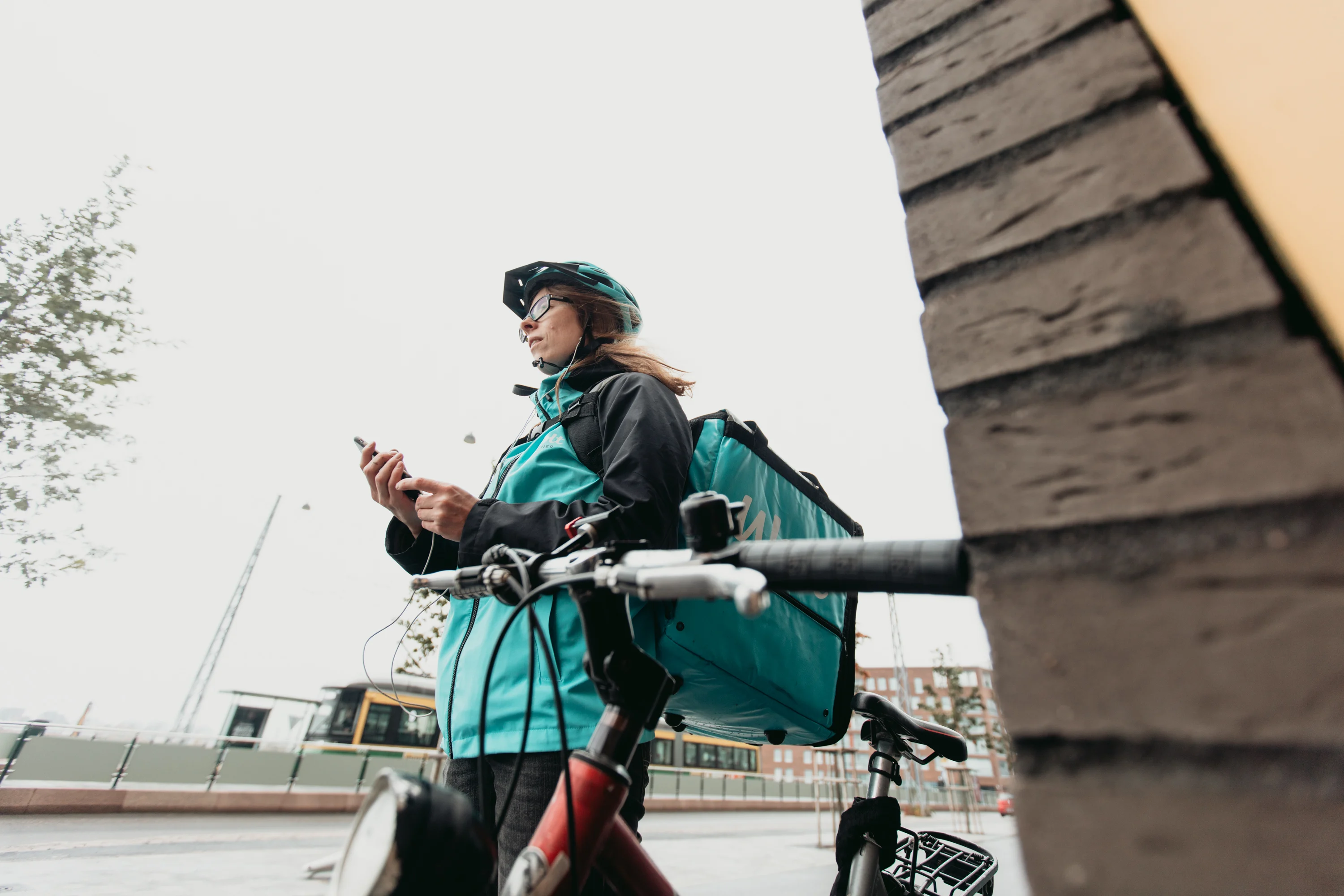Safety
Safety comes first. Tips, resources, and support to stay safe on the road and during the deliveries.
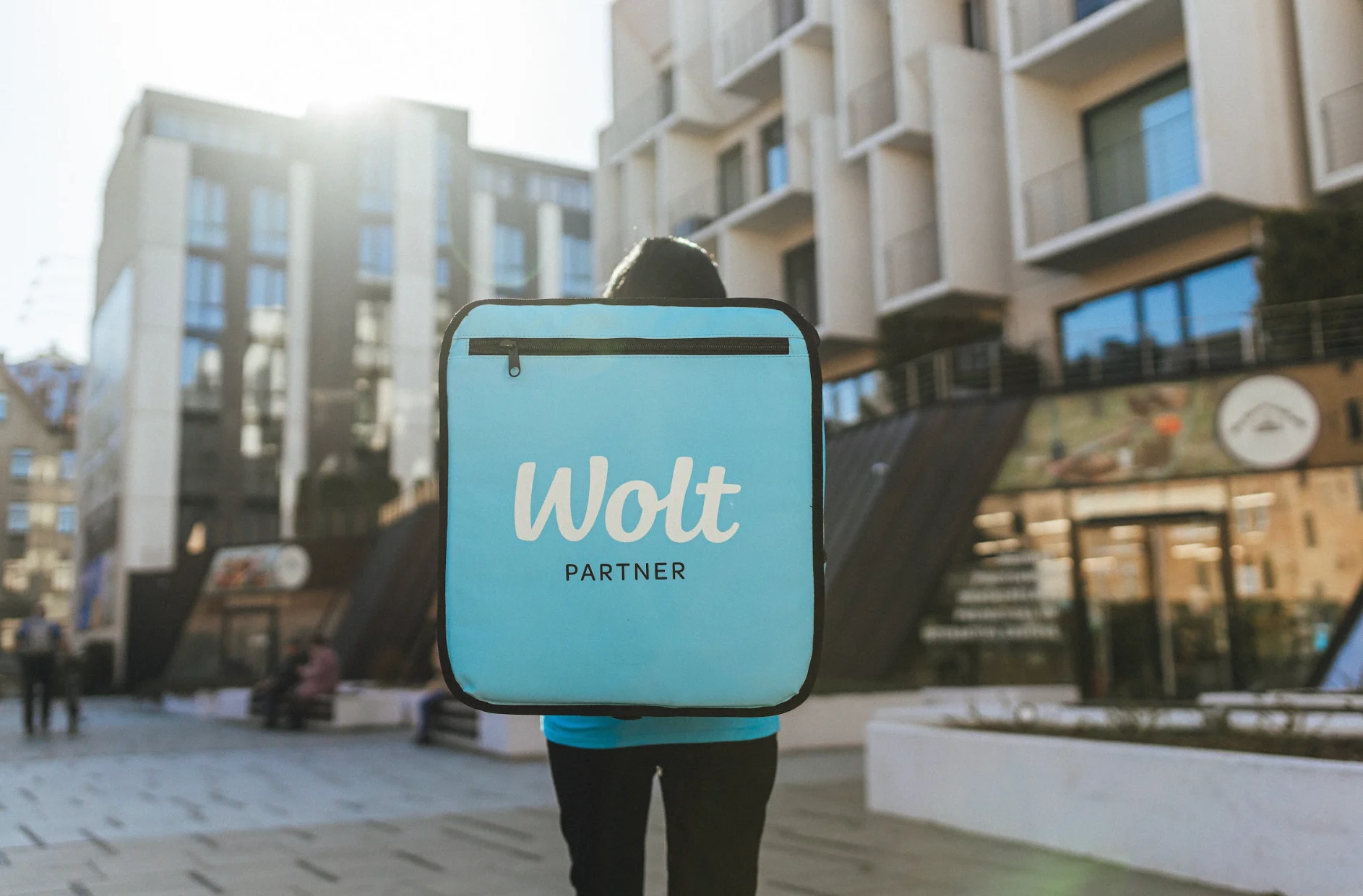
Safety Tips

Safety Tips: Cars
It is recommended to:
Keep a safe distance; Follow traffic lights, road signs, and speed limits; 🚗 Be considerate of other people, cars, cyclists, and scooter riders; Focus on driving; Wear your seat belt; 🚗

Safety Tips: Bikes
It is recommended to:
Wear a helmet; ⛑️ Be considerate of other people, cars, cyclists and scooter riders; 🚗 Keep a safe distance; Follow the rules of the road and follow road signs; 🚗
Incident Reporting

Recommendation to prevent conflict
Look around for an escape route. Preventing conflict is usually the best option and can get you to safety.

Health is important
You can leave your equipment behind if necessary to prevent conflict. Health and well-being are more important than things that can always be replaced.
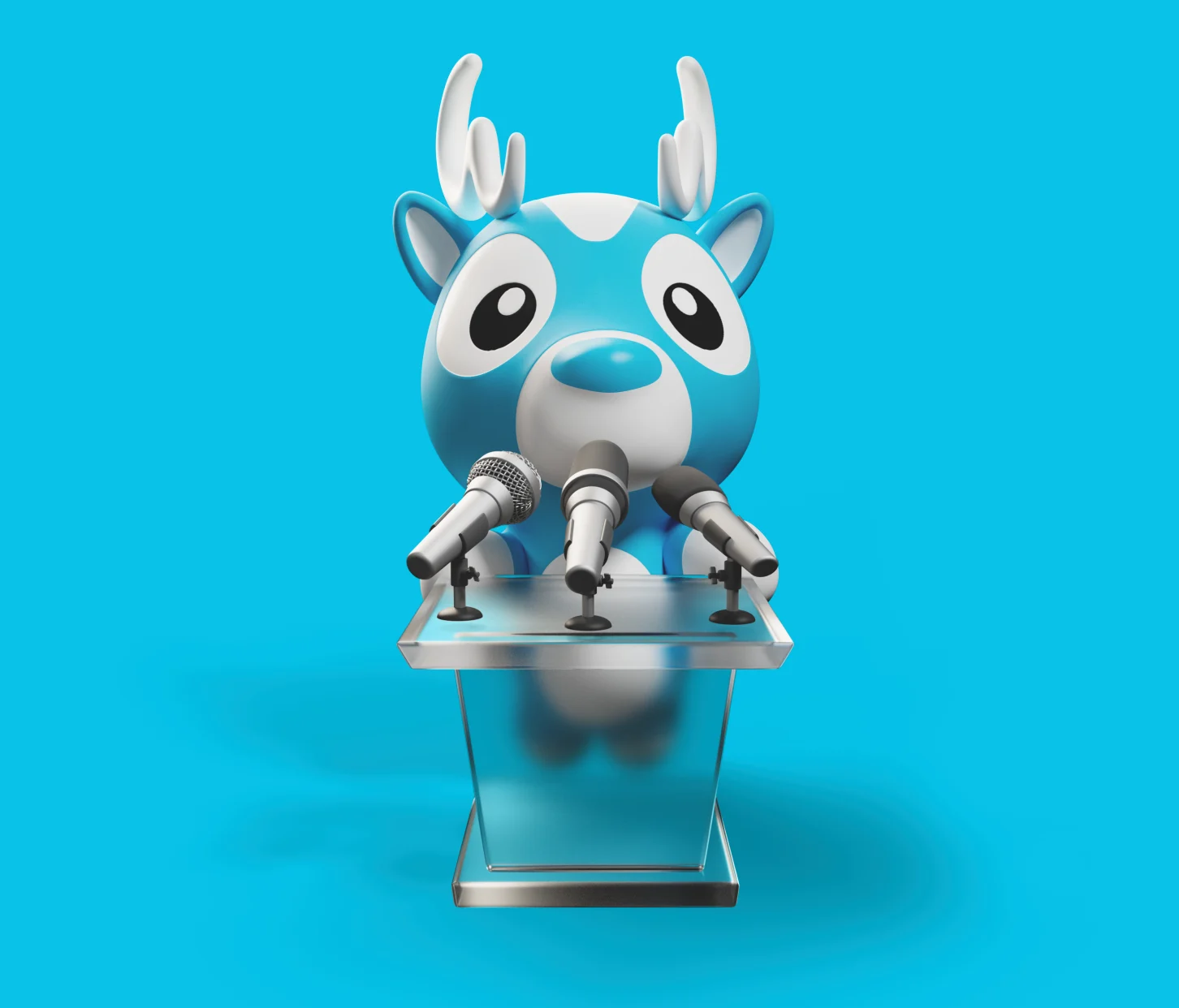
It is recommended to be loud
If there are other people nearby, you can shout for help.
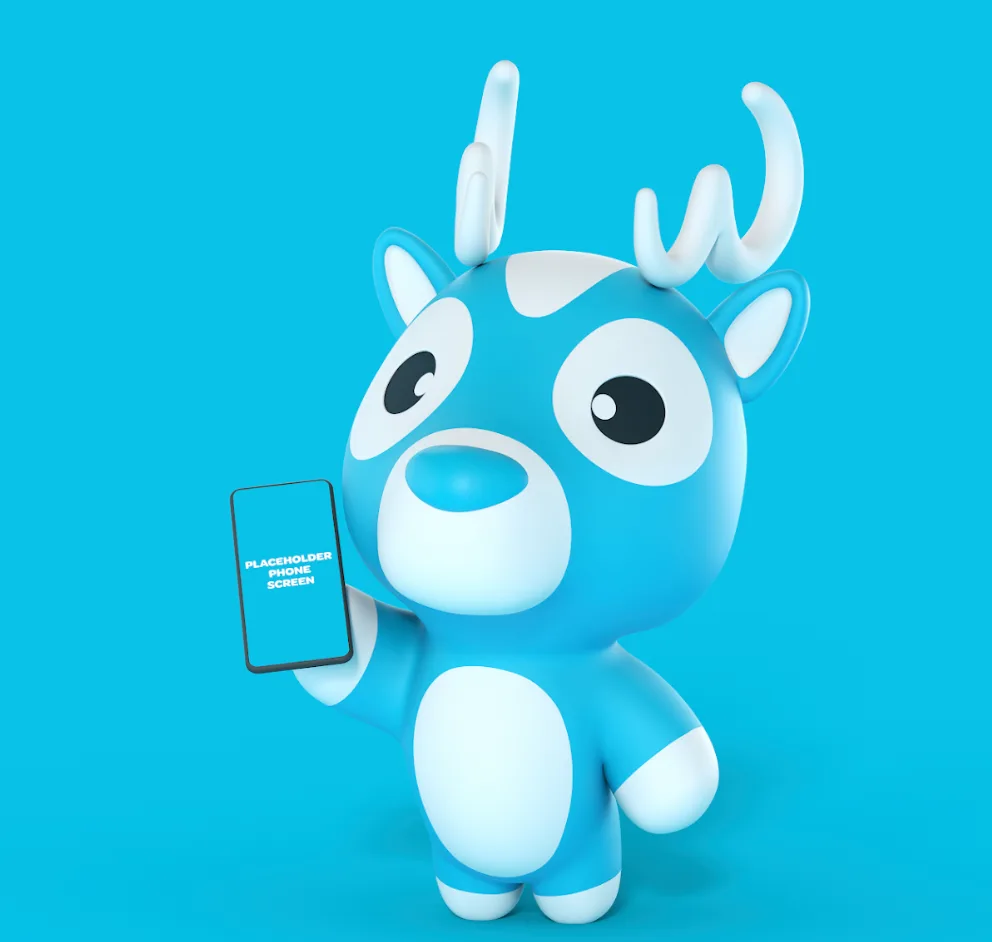
Materials
You can try to turn on the camera as soon as possible – all the materials may be useful later.
How to Handle Incidents Outside Your Control
Sometimes things happen on the road that you simply can’t predict or prevent - traffic accidents, sudden road closures, unexpected delays at venues, or issues with your vehicle. When something outside your control affects a delivery, here’s what to do:
1. Put safety first If you’re in or near an incident, stay safe and move to a secure area before taking any further steps.
2. Report the issue right away Open the Wolt Courier Partner app and contact Support as soon as possible. The sooner we know what’s happening, the faster we can help.
3. Share clear details Briefly explain what happened and how it’s affecting your delivery. No need for long descriptions - just the key facts.
4. Follow Support’s guidance Our team will assist you with the next steps, whether that means rerouting, canceling the task, or providing further instructions.
5. Don’t worry about penalties If the delay is caused by something truly outside your control, you won’t be penalized for reporting it. We’re here to support you.
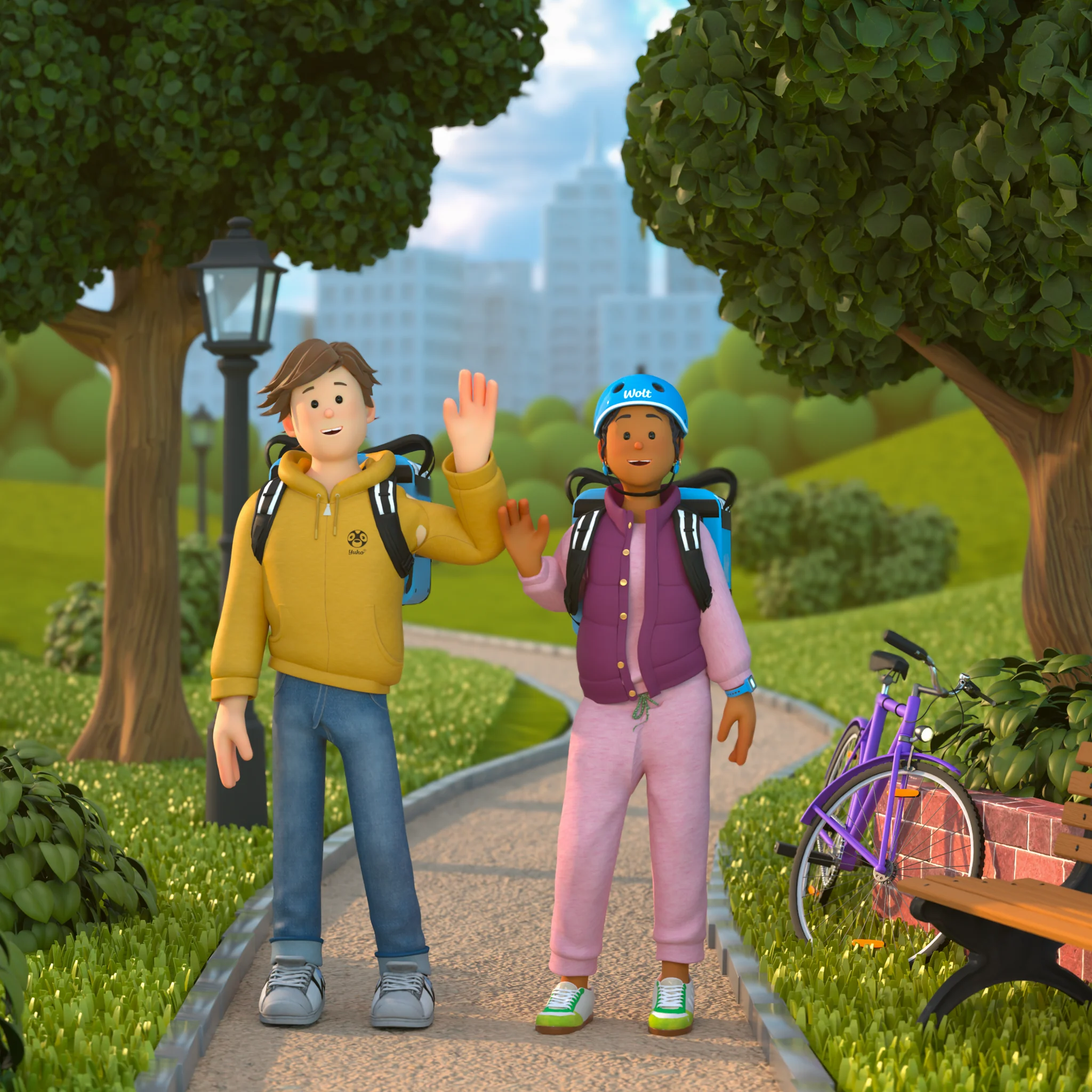
Safety Equipment Recommendations
Having the right gear can make a difference in staying safe, comfortable while out on deliveries.
Here are some tips we recommend:
⛑️ Helmet – Wear a certified helmet when cycling or riding a scooter. It’s a simple step that can save your life.
⚙️ Reflective Clothing & Gear – Visibility is key, especially during dark mornings, evenings, and winter months. Reflective vests, jacket strips, and bag covers help ensure others see you.
🌧️ Weather-Appropriate Clothing – Waterproof jackets, gloves, and non-slip footwear help you stay dry and steady in rain or snow. Layers are useful during colder months to stay warm.
📱 Phone Mount – A secure mount helps you to navigate safely without taking your hands off the handlebars or steering wheel.
🔋 Power Bank – You can keep your phone charged throughout your time online so you’re never cut off from navigation or support.
🚦Lights – Front and rear lights for bikes or scooters are essential—not just for seeing, but for being seen.
🔐 Lock – A solid bike or scooter lock helps keep your gear secure while dropping off orders.
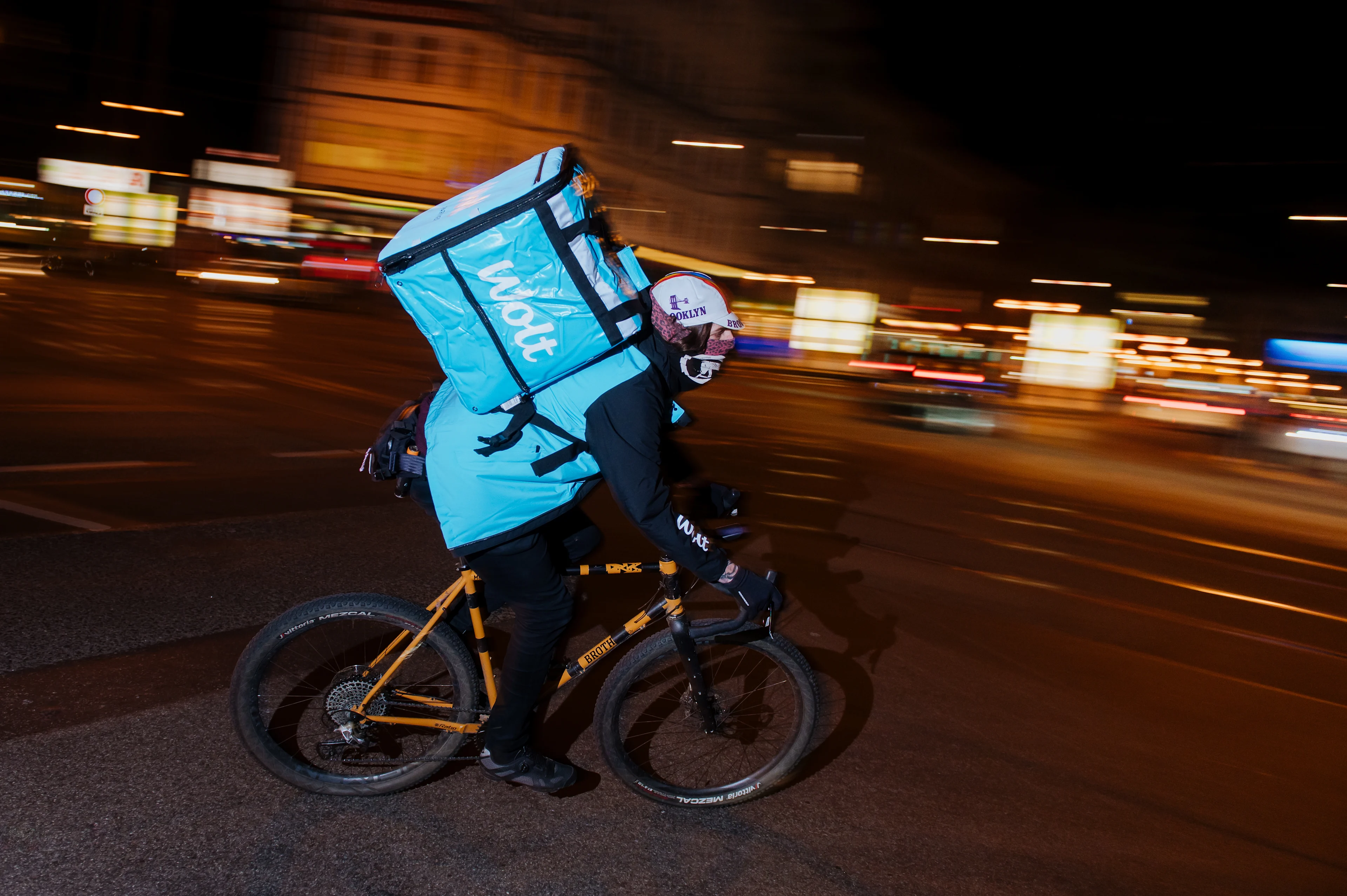
No Contact Delivery
Here’s a quick refresher on how to handle no contact deliveries — it’s still an important part of ensuring a smooth, safe, and professional experience for everyone involved:
Recommendation for No Contact Delivery:
1. The order can be left at the customer’s door or where they’ve requested in the app. 2. Ring the bell or knock, then step back a few metres to give the customer space. 3. Wait for the customer to collect the order. If there’s no answer, give them a call. 4. Confirm their name once they arrive, to make sure it matches the order. 💙 5. Only mark the order as delivered once the customer has physically picked it up.
If they don’t show up or there’s an issue, reach out to support.
📦 With more high-value orders being placed — not just food, but retail and specialty items too — it's crucial to make sure deliveries don’t end up in the wrong hands.

Digital Safety Recommendations
Protecting personal information and staying secure online is just as important as staying safe on the road.
Here are a few tips to keep your digital identity safe:
Avoid sharing your login details – Wolt courier account is personal.
Watch out for scams – Wolt will never ask for your password, banking details, or personal info over messaging apps or social media. If something feels suspicious, report it to support.
Be careful in group chats – In community chats, it is recommended to avoid sharing sensitive info. Anyone can screenshot or forward your messages.
If you ever suspect your account has been compromised, contact Wolt Support immediately
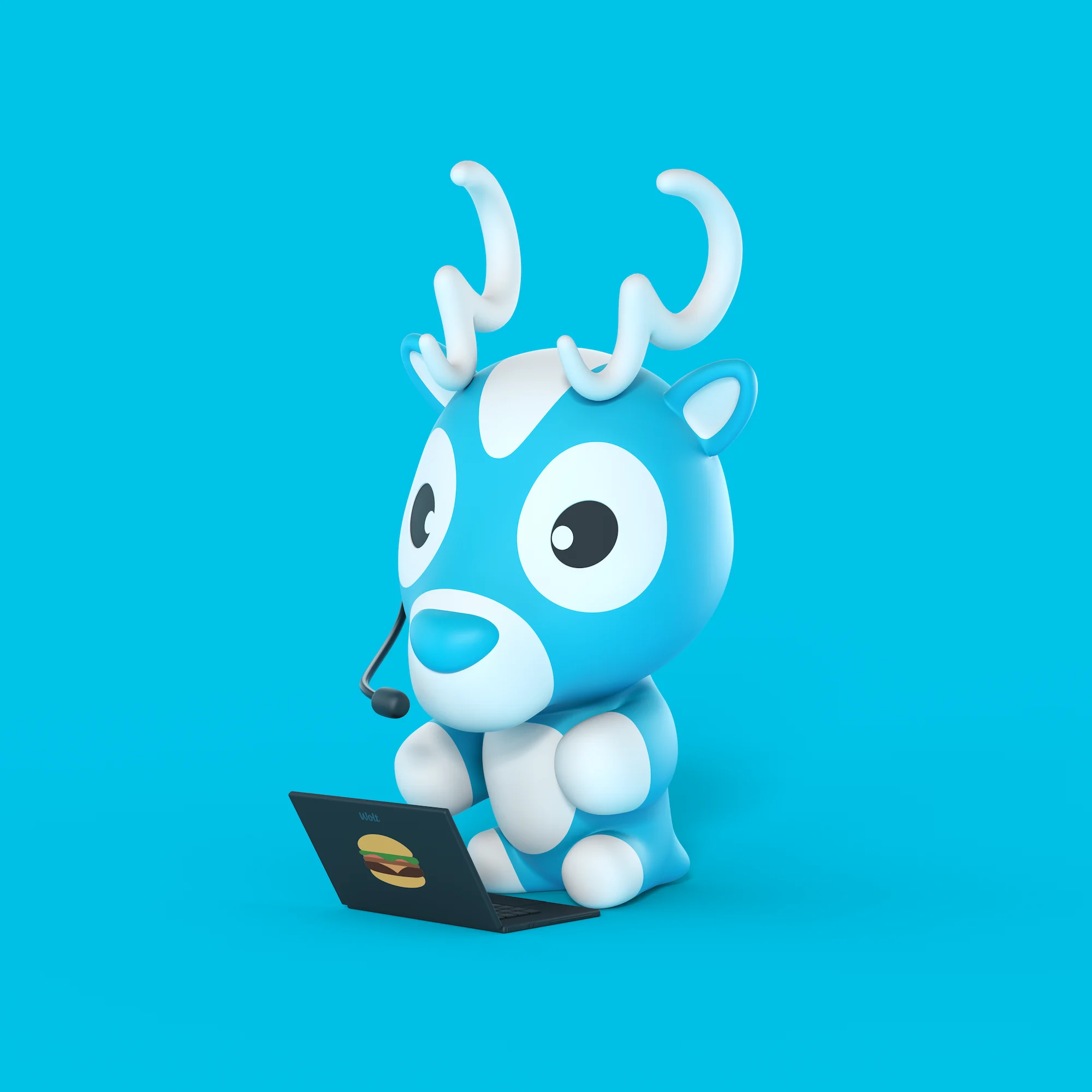
Winter Safety Tips
Winter is coming, and with it road conditions and legal requirements for vehicles. We wanted to give you a friendly reminder to check your vehicle so you feel safe and prepared while delivering.
Besides tyres, it can also be helpful to give your vehicle a quick winter wellness check — such as topping up windshield wiper fluid, checking tyre pressure, lights and indicators (especially anti-fog lights), and brakes. Handy accessories like an ice scraper can also make your days a bit easier.
Making sure your vehicle is ready for the season can bring extra comfort and control on the road.
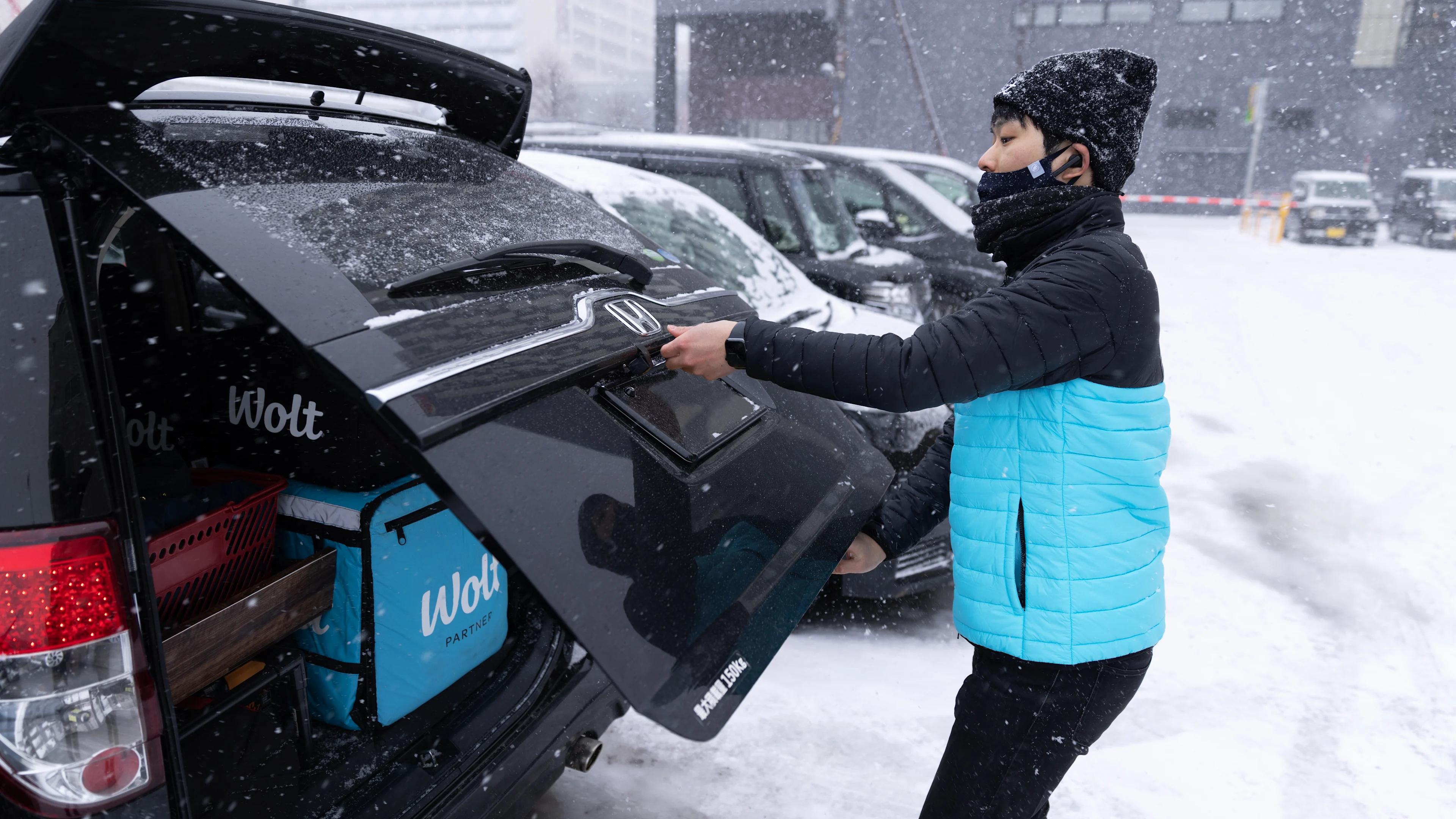
Winter is nearly here, and it’s usually the busiest season for orders. With more people staying indoors and ordering food, this period often means very high demand and multiple deliveries — an exciting time with plenty of opportunities for partners on the road. 🩵
From past years, many partners have noticed that the busiest moments are during lunch (11:00–13:00) and dinner (16:00–20:00). Weekends also tend to be the top peak — with Sundays often being the busiest day of the week.
As stated in the Wolt Partner Service Agreement and required by local food authorities, a thermobag must always be used from pickup until delivery at the customer’s door. This is especially important in colder months, as the bag helps keep meals at the right temperature so customers enjoy their food as intended.
Some partners also find it helpful to prepare in advance and pace themselves through the higher volumes. However, no matter how you plan your deliveries, using a thermobag at all times is not optional — it’s required.
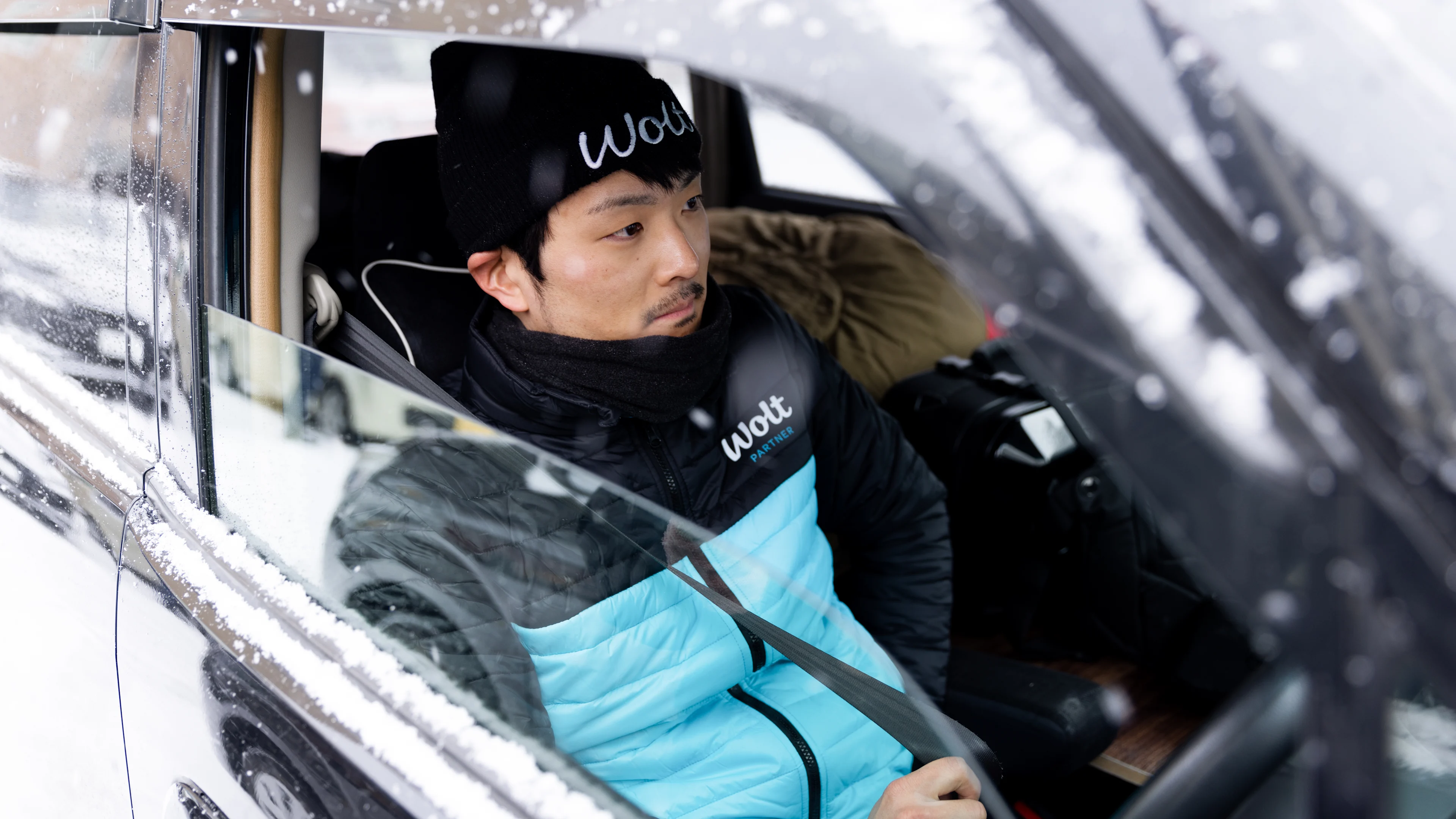
On October evenings will get darker earlier. Combined with colder and sometimes icy weather, this makes road conditions trickier for everyone — whether you’re driving a car, cycling, or riding a scooter.
Winter is also one of our busiest seasons for orders, which makes being prepared even more important. Checking that your vehicle is ready for the months ahead can make a big difference: working lights help you stay visible, brakes are especially important on slippery roads, and winter tyres can be useful if required or if conditions become icy or snowy.
Remember that wet or icy roads mean longer braking distances, so leaving extra space to the vehicle in front can help keep you safe. Dressing warmly and allowing yourself a bit of extra time on the road can also make the season more comfortable and safer.
Taking things at a steady pace during darker evenings and busier streets can help you feel more in control. And if you’d like to order additional Wolt gear to help you through the colder months, you can always reach out to Support for assistance.

As a Wolt partner, you spend a lot of time on the road — whether it’s by car, bike, or scooter. 🚗 🚲 🛵 Winter conditions can bring extra risks: icy roads, snowy weather, and darker days. Your safety is very important to us, and we’d like to share some tips that may help you stay safer during deliveries. ❗
Here are some recommendations that could be useful this winter: ⬇️
Stay focused: It might help to keep your eyes on the road and check the app only when you’re not moving.
Adapt to the season: Slowing down a little in rain, snow, or icy conditions can help reduce risks.
Be seen: Reflective gear and working lights can make a big difference in darker hours.
Take your time: Waiting for a green light and avoiding risky shortcuts keeps you safer.
Follow local traffic rules: Respecting signals and adjusting speed to conditions can help avoid accidents.
Drive/ride defensively: Even if you follow the rules, other traffic participants may not — staying vigilant and anticipating hazards can help you avoid accidents.
Helmet use: Many partners find wearing a helmet adds protection and peace of mind.
No headphones while riding: Staying fully aware of your surroundings can make a big difference.
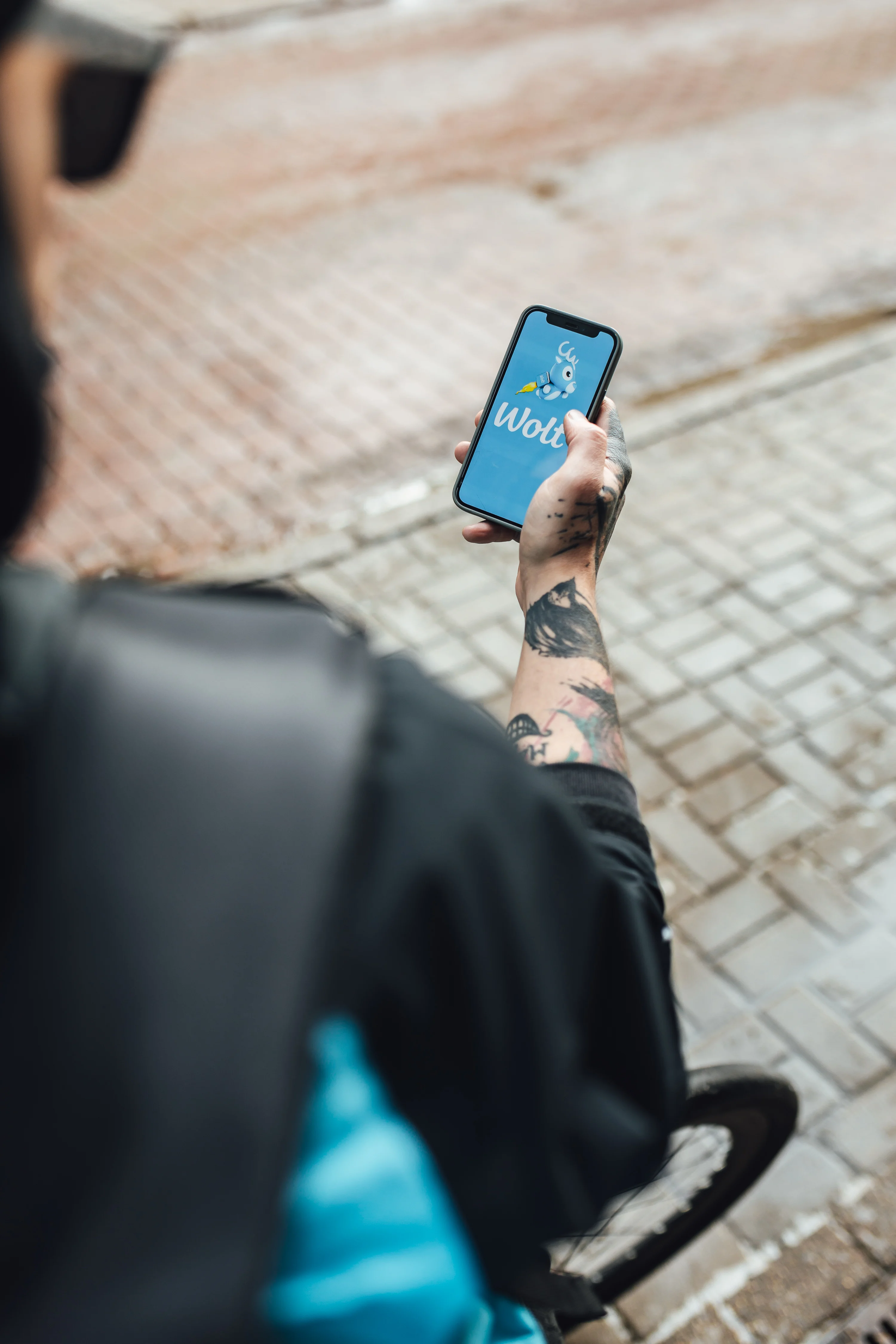
Food Safety Recommendations
Courier Partner Service Agreement
In order to ensure compliance with applicable food safety laws and regulations and to maintain the quality of the delivered goods, the Delivery Services shall be performed in accordance with these guidelines:
Food deliveries shall always be made by using an appropriate thermo-insulated bag, equipped with a separate inner container.
Restaurants/grocery stores shall hand over for delivery only ready-prepared and well-packaged meals or food items, which shall be delivered to the User without undue delay to maintain food safety.
Food that has been in delivery for more than 1 hour may not be handed over to the User.
Food deliveries from the restaurants are packaged in such a way that Courier Partners do not come into direct contact with the food. The Courier Partner places the food immediately in a refrigerated or thermal bag, depending on the temperature and quality of the goods being transported.
Food is handed over in bags intended for transportation. The goods must be handed over to the User directly from the refrigerated or thermal bag, depending on the temperature and quality of the goods being transported to maintain the best possible quality of food. Products cannot be taken out of the bag during delivery.
The Courier Partner will ensure during the delivery that the quality of the goods is maintained. If any significant changes in the quality of the goods occur or the Courier Partner has reason to believe that the temperature of the order has been compromised during delivery, the Courier Partner shall notify Wolt support about it immediately.
The products will be delivered in a manner in which no foreign smell, taste or other harmful properties affects the quality of the product or gets involved in any way with the product.
If the Courier Partner suffers from generally contagious illnesses (such as the flu), the Courier Partner shall refrain from performing the Delivery Services.
Road Safety Recommendations
Welcome to Wolt’s Road Safety Recommendations!
This section is designed to help you stay safe while delivering with Wolt. We want to help you understand the most important traffic rules in your country, know how to navigate the streets safely, how to report incidents, and how to protect yourself with the right gear.
Let’s work together to make our roads safer for everyone.
After reading those recommendations, you will: - Know the most important traffic laws. - Understand how to ride or drive defensively. - Be able to report incidents quickly and correctly. - Recognize the importance of wearing safety gear. - Learn Wolt’s safety expectations and best practices for micro-mobility couriers.
The road traffic rules in each country are binding for all road users, including couriers. Understanding and following them is essential for your safety and for avoiding fines or other consequences. Always make sure you are aware of your local regulations.
Allowed speed and legal requirements (general guidelines – may vary by country):
Bikes, e-bikes, e-scooters, light micro-mobility vehicles (up to ~1kW): typically up to 20–25 km/h on bike lanes or paths. Wearing a helmet is highly recommended.
Mopeds, e-mopeds, stronger e-scooters (1–4kW): usually allowed from 25–45 km/h. A helmet and valid driver’s license are required, and you must use the street lanes (not bike or pedestrian paths).
Cars: typically up to 50 km/h in urban areas, unless otherwise indicated by local signs.
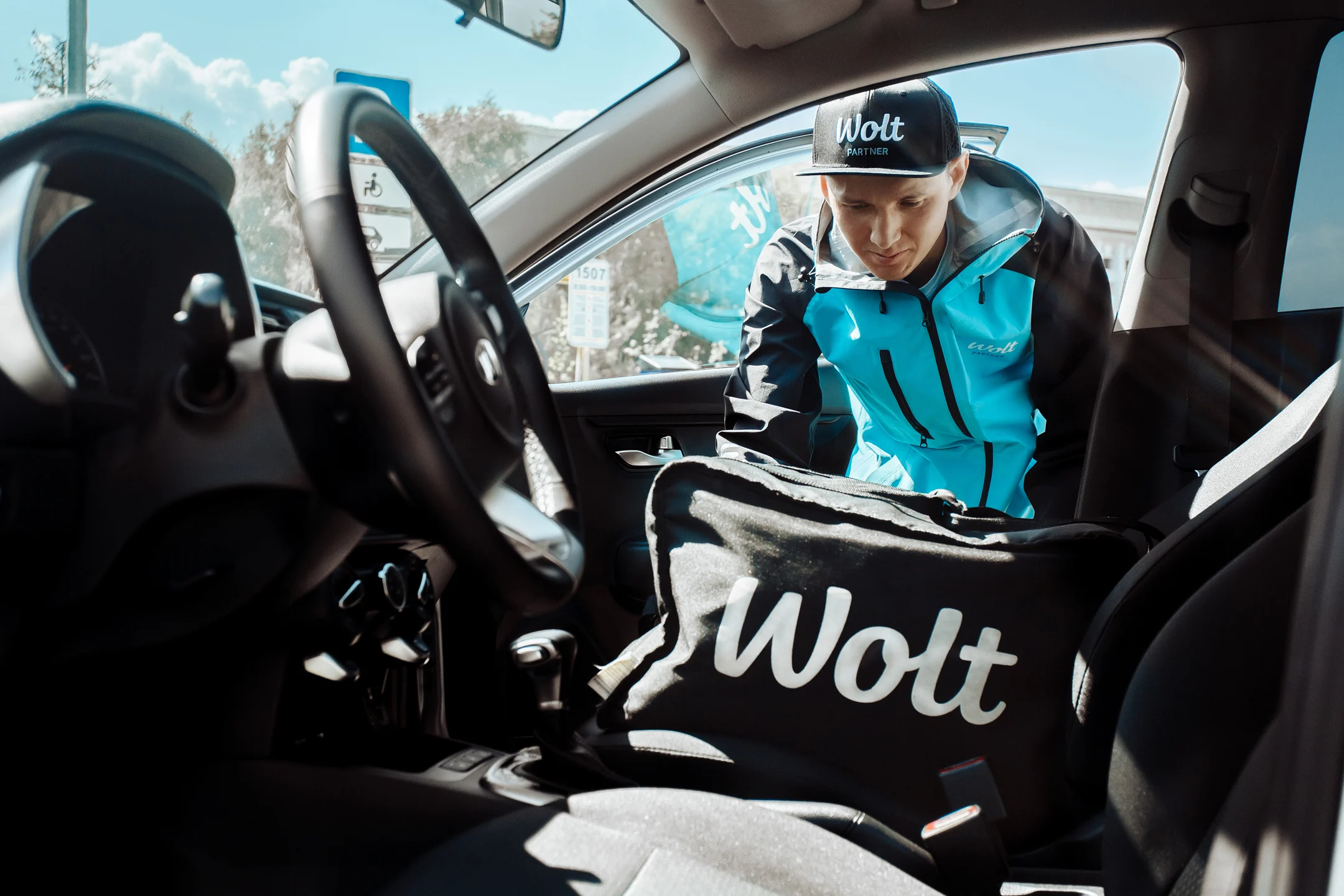
Traffic signs and signals:
Red lights mean full stop – wait until the light turns green.
Right turns on red are only allowed if local laws permit and you yield to other traffic and pedestrians.
Stop signs mean a complete stop – check both directions and proceed only when safe.
Right of way (examples common across countries):
Yield to traffic already in a roundabout.
At uncontrolled intersections, vehicles approaching from the right often have priority (the "right-hand rule" in many countries).
Always yield to pedestrians at marked (and in some countries also unmarked) crosswalks.

For bicycles and scooters:
Use designated bike lanes or paths where available. If none exist, ride on the right side of the road in the direction of traffic.
At pedestrian crossings, you may need to dismount and cross on foot (check your country’s rule).
Sidewalk riding is only allowed if permitted locally and if it’s safe for pedestrians.
Helmets are often mandatory for under-18s and recommended for everyone.
For cars and mopeds:
Always respect posted speed limits.
Never stop or park in bike lanes.
Be extra careful in delivery zones and pedestrian-heavy areas.
Maintain safe passing distances: in many countries this means at least 1 meter at low speeds, and 1.5 meters at higher speeds.
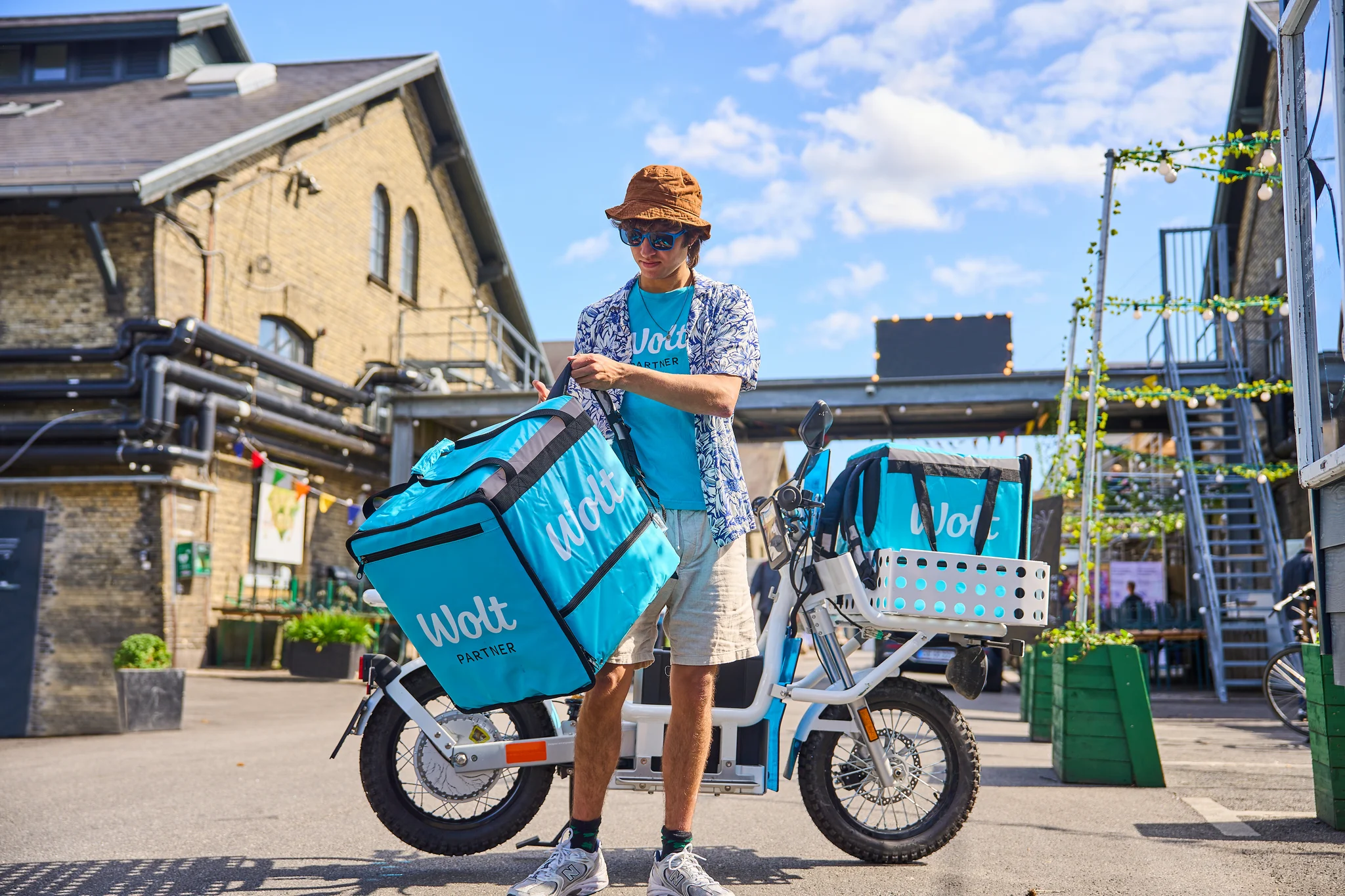
Defensive riding and driving mean staying alert, anticipating risks, and being prepared for the unexpected. Whether you’re on a bike, scooter, moped, or car, these principles help keep you and others safe:
Scan the road ahead: Look out for cars, pedestrians, cyclists, and obstacles at all times.
Keep a safe distance: Maintain enough space between you and other vehicles, especially in traffic or at higher speeds.
Slow down at risky points: Reduce speed at intersections, driveways, pedestrian crossings, and blind corners.
Signal your intentions: Use hand signals when turning or changing lanes if your vehicle does not have turn indicators.
Stay out of blind spots: Make sure other drivers can see you, especially larger vehicles.
Adjust for weather conditions: In rain, snow, or fog, ride more slowly, increase braking distance, and always use lights and reflective gear.
Avoid distractions: Never text or browse while moving. Stop safely if you need to check the app.
Use proper equipment: A phone mount allows safe navigation without taking your hands off the handlebars.
Stay focused: Avoid using headphones or anything that reduces your ability to hear and react to traffic.
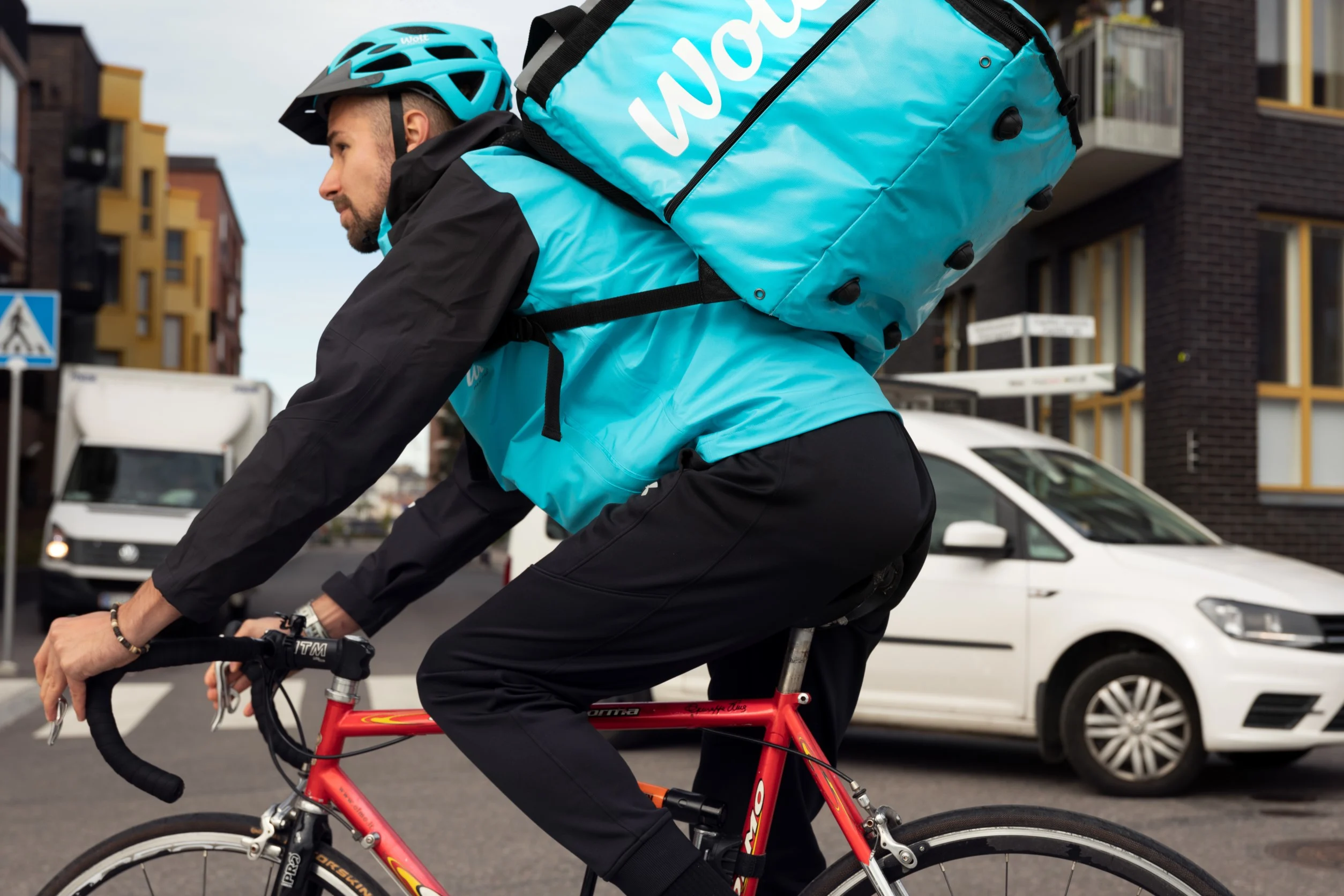
If You Are Involved in or Witness an Accident
Ensure your own safety first. Move yourself and your vehicle out of traffic if possible.
Call local emergency services (e.g., 112 in most European countries) if there are injuries or significant damage.
Report the incident through the Wolt courier app under Support so our team can assist you.
Provide clear details – describe what happened, include time and location, and attach photos or video if possible.
Wolt will follow up to support you and, if needed, investigate further.
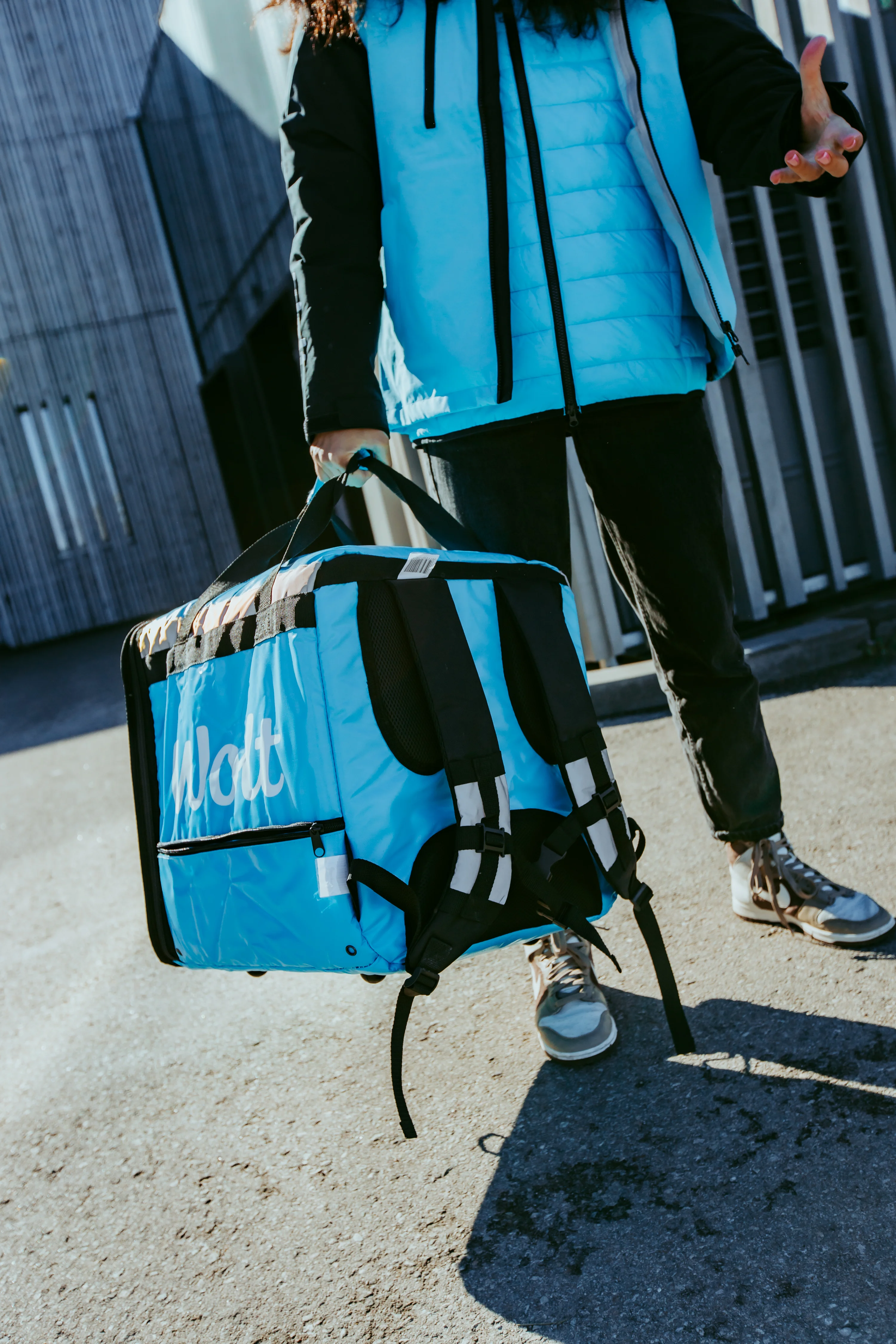
Using proper safety gear can save lives. Here’s what every courier should use: • Helmet – For your safety, we recommend you always wear one, even for short trips. • Reflective vest or jacket – Especially important when riding at night or in low-visibility weather. • Gloves – Protect your hands and improve grip. • Lights – White front light and red rear light are required by law when dark. • Bell or horn – Essential to alert pedestrians or other road users. • Regularly check your vehicle – brakes, tires, and lights must be in good condition.
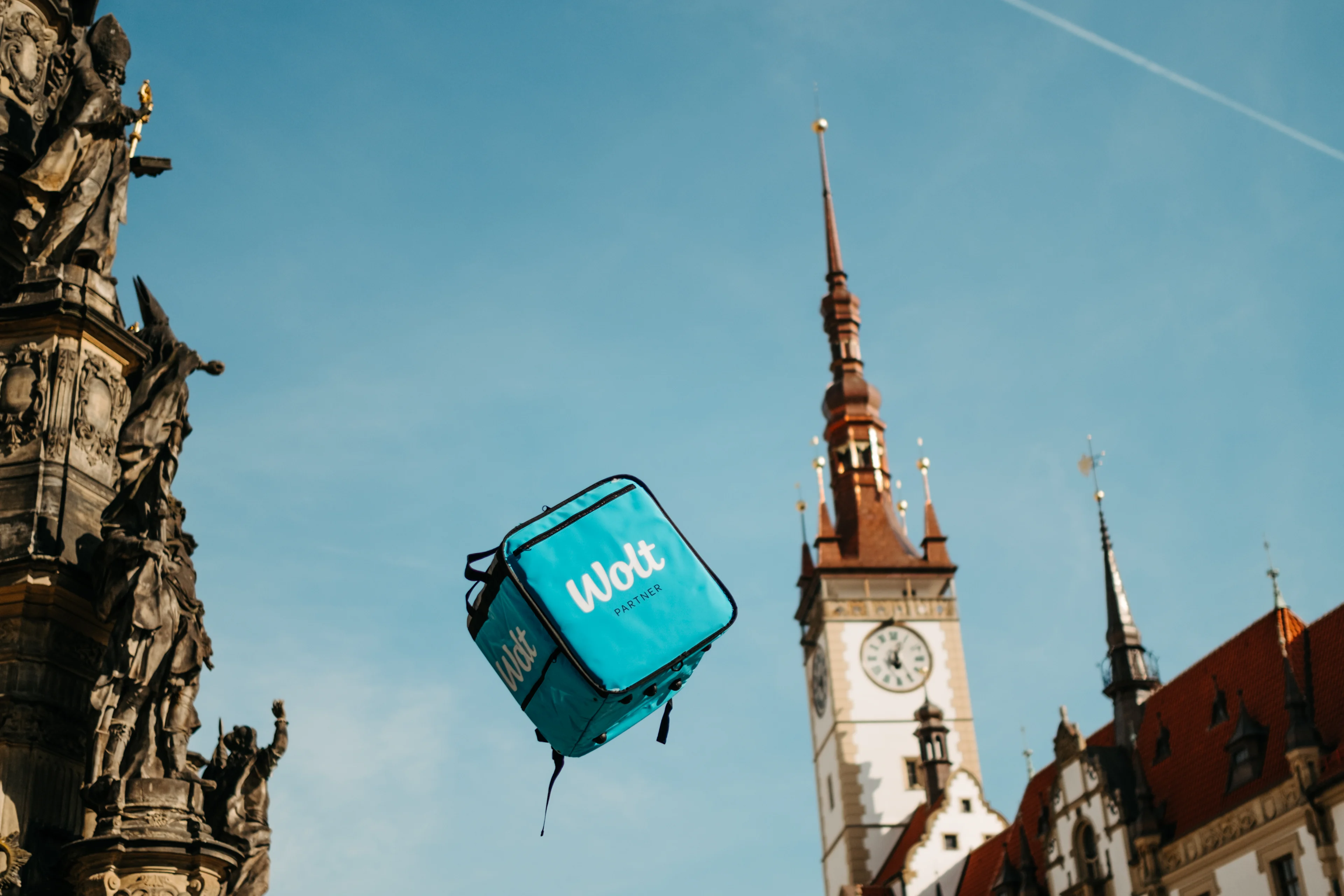
We know that many courier partners choose to deliver during bad weather because of higher demand. While we appreciate your dedication, your safety always comes first. Rain, snow, ice, wind, and fog all increase the risk of accidents, so please take extra precautions in these conditions.
In rainy conditions:
Reduce your speed.
Brake earlier and more gradually.
Avoid sharp or sudden turns.
Keep your bike, scooter, or car lights on at all times.
For micro-mobility couriers (bikes, e-bikes, scooters):
Wear waterproof and reflective clothing to stay visible.
In snowy or icy conditions, pause deliveries unless your equipment is winter-ready (e.g., studded tires, proper brakes, suitable footwear). Ice can be nearly invisible (“black ice”) and very dangerous.
For car couriers:
Use season-appropriate tires.
Increase braking distance significantly in snow, ice, or wet roads.
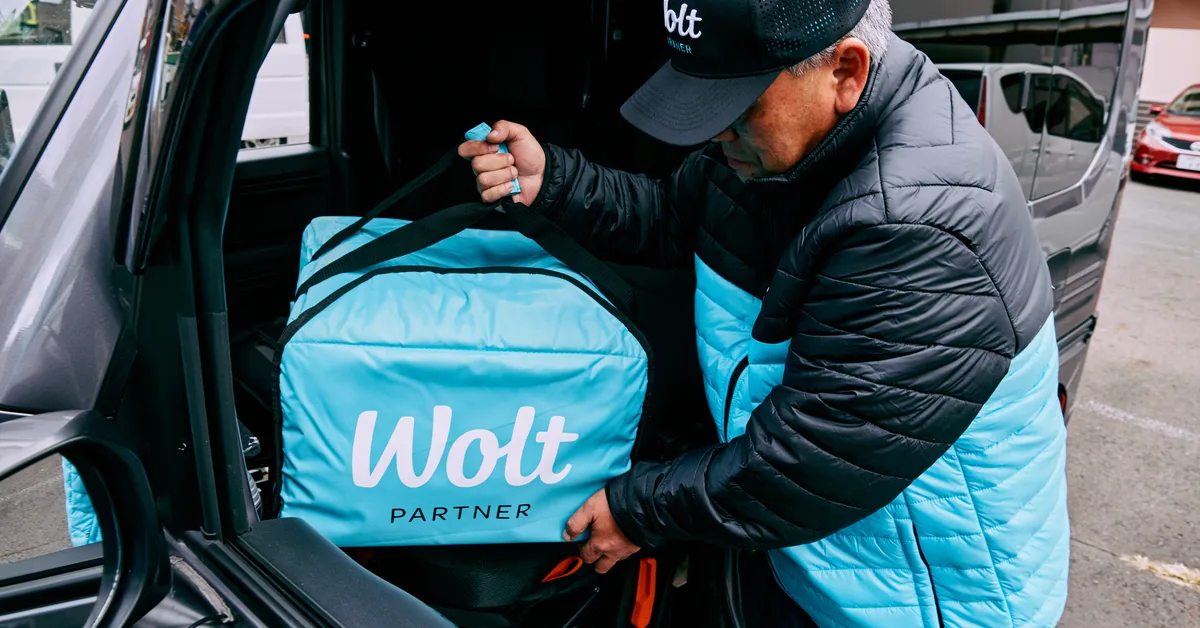
In low visibility (fog, dusk, heavy rain):
Always use lights (white front, red rear).
Wear reflective or high-visibility gear.
Be extra cautious in tunnels, overpasses, and shaded areas where ice and moisture can linger.
🚨 Important: If at any time you feel unsafe, pause deliveries in the app and report conditions through Support. Your safety is the top priority – there is never a penalty for choosing not to deliver when conditions are unsafe.
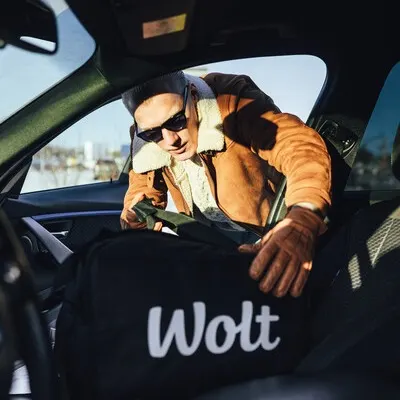
In low visibility (fog, dusk, heavy rain):
Always use lights (white front, red rear).
Wear reflective or high-visibility gear.
Be extra cautious in tunnels, overpasses, and shaded areas where ice and moisture can linger.
🚨 Important: If at any time you feel unsafe, pause deliveries in the app and report conditions through Support. Your safety is the top priority – there is never a penalty for choosing not to deliver when conditions are unsafe.
